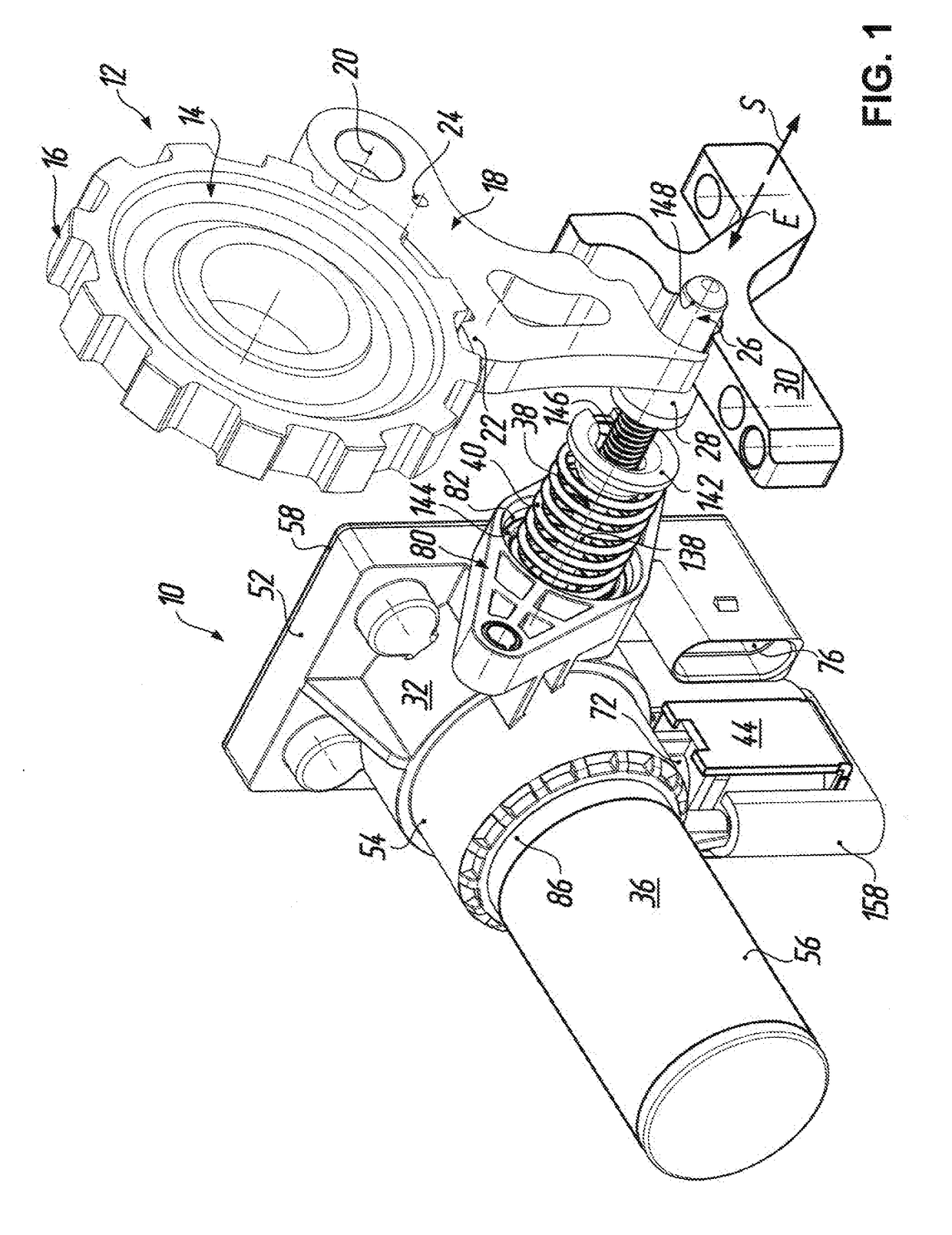Electric parking brake actuator for actuation of a parking brake in a motor vehicle
a technology for parking brakes and actuators, which is applied in the direction of braking systems, gearing control, belts/chains/gearrings, etc., can solve the problems of high cost, large installation space, and complex construction of the actuating device, and achieve economic and readily commercially available, low cost, and favorable energy balance
- Summary
- Abstract
- Description
- Claims
- Application Information
AI Technical Summary
Benefits of technology
Problems solved by technology
Method used
Image
Examples
Embodiment Construction
[0041]An electric-brake actuator for actuation of a parking brake 12 in a motor vehicle is denoted in the figures by the reference numeral 10. According to FIG. 1 the parking brake 12 includes, in a manner known per se, a parking brake wheel 14 which is arranged on a transmission shaft (not illustrated) of a motor vehicle transmission to be fixed rotationally and axially relative thereto and has a toothing 16 at the outer circumference. For mechanically positive locking of the drive train of the motor vehicle the parking brake 12 further includes a pawl 18, which is coupled to a transmission housing (not shown here) to be pivotable about a pivot axis 20 and which has a locking tooth 22 which when the pawl 18 is pivoted about the pivot axis 20 is capable of mechanically positive engagement with the toothing 16 of the parking brake wheel 14. The reference numeral 24 indicates a bore in the pawl 18, at which bore a return spring (not shown here) supported relative to the transmission h...
PUM
 Login to View More
Login to View More Abstract
Description
Claims
Application Information
 Login to View More
Login to View More - R&D
- Intellectual Property
- Life Sciences
- Materials
- Tech Scout
- Unparalleled Data Quality
- Higher Quality Content
- 60% Fewer Hallucinations
Browse by: Latest US Patents, China's latest patents, Technical Efficacy Thesaurus, Application Domain, Technology Topic, Popular Technical Reports.
© 2025 PatSnap. All rights reserved.Legal|Privacy policy|Modern Slavery Act Transparency Statement|Sitemap|About US| Contact US: help@patsnap.com



